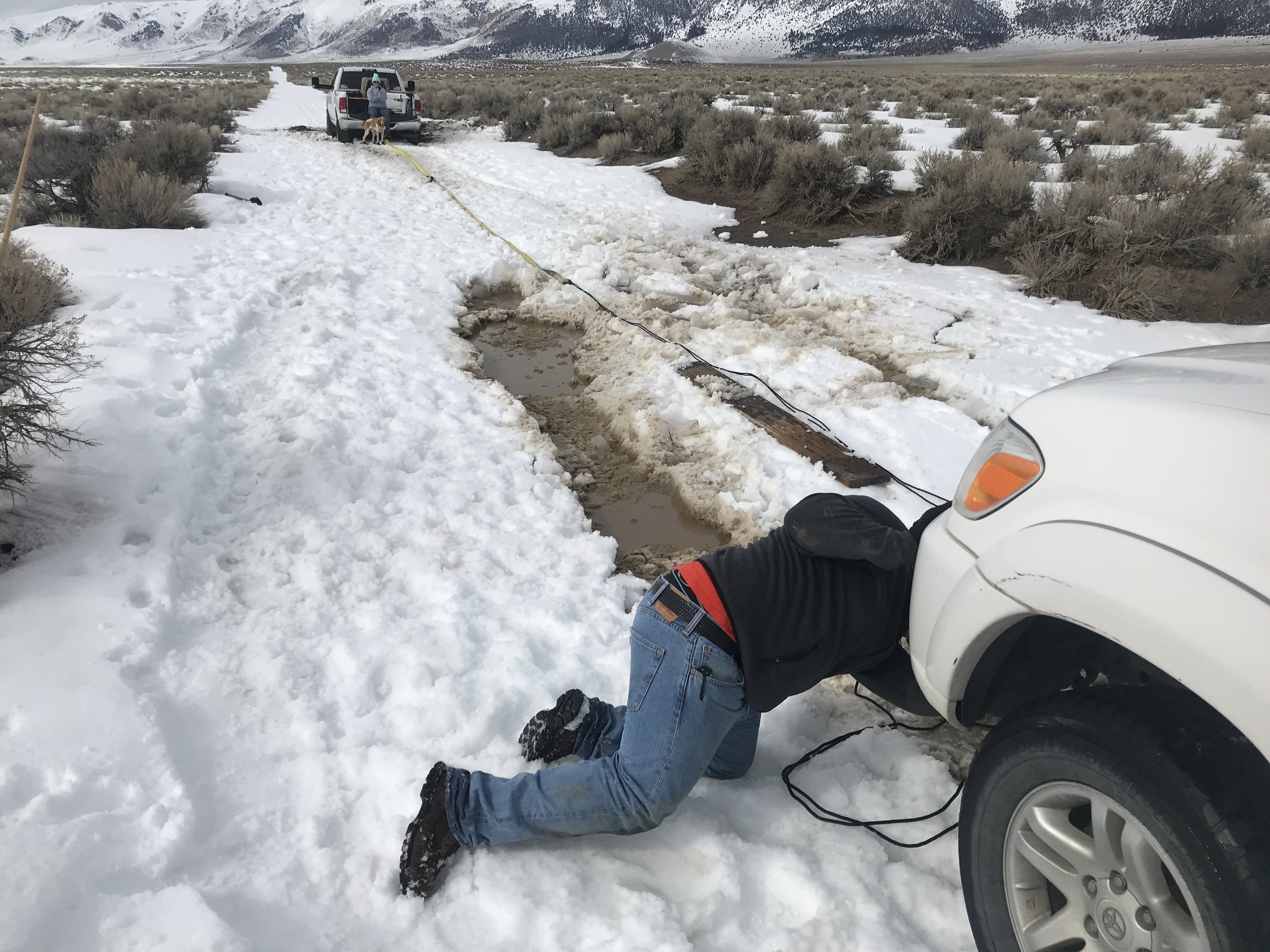It’s Christmas eve!!! I hope everyone finds the present they want under the tree this year. We got are present in the Eastern Sierra a day or two early.
The Eastern Sierra is getting storms. This means we will have water to fish in next season. The Eastern Sierra is in for a week’s worth of storms with rain in the Owens Valley and snow at the upper elevations. These systems are hard to predict what we will get out of them. We will know when it’s on the ground. Access to the upper elevation waters is limited to snow shoeing, skiing, or snowmobiling. The Owens Valley dirt roads will have dirt, mud, and puddles. Fishing is in winter mode with most anglers fly fishing with nymphs and the occasional streamer.
The lower Owens River while a winter storm is coming to the Eastern Sierra.
Lower Owens River:
Wild Trout Section:
Chalk Bluff Road is wet, muddy and has puddles, but it’s drivable. The blue wing olive mayfly and caddis hatch are over. You will find a few hatching, but the trout are coming to the surface for the midges. Nymphs under an indicator or using a Euro rig is what’s producing trout. Size 20 bead head flash back pheasant tail nymphs, size 16 to 20 tiger midges, zebra midges, and blood midges, size 12 stoner nymphs, size 18 olive quilldigons, and Frenchies are producing wild trout. This time of the year the trout are not feeding heavily and require lots more casts than in the summer time to properly drift the fly to the trout. I’m casting two to three times as many casts in the winter time than I do in the summer time.
Fly fishing an underutilized section of the catch and release section of the lower Owens River.
Hot Creek:
Interpretive Site:
Access to Hot Creek at the interpretive site is a hike in from the Hot Creek Hatchery Road. It’s a short walk in, but with the snow drifts snow shoes makes it easier. Midges mid-day are offering some surface activity. Nymphing is the most productive method of fishing the creek right now. Midge nymphs and midge pupae patterns fished under a dry fly or an indicator is what is producing right now. I keep a few dry flies in the bag to fish if the hatch is enough to bring the trout to the surface.
Winter access to Hot Creek Canyon is by foot, snowshoes, skis, or snowmobiles.
Hot Creek:
Canyon Section:
Access to the Hot Creek Canyon section starts where the road is no longer plowed. It’s a mile to two mile trek in depending on where you access the creek. Walking, snowshoeing, skiing or snowmobiling is required to access the creek. Nymphing is the most productive method to fish in the canyon and it’s been tough. Fish with size 20 bead head flash back pheasant tail nymphs or size 16 to 18 tiger midges, zebra midges, or blood midges.
Upper Owens River:
Above Benton Crossing Bridge:
Access to the upper Owens River starts at Benton Crossing Bridge. Fly fishers need to walk, snowshoe, ski or snowmobile to access the river. Parking at Benton Crossing Bridge is limited. Fly fishers willing to trek through the snow looking for trophy trout will have to cover a lot of ground to find pods of trophy trout feeding in the deeper pools and runs. Fishing with larger nymphs is producing fish for the hardy fly fisher willing to expend the energy to fly fish the upper Owens River.
Getting stuck is the results of trying to drive the dirt roads on the upper Owens River when the roads are full of sno
Bishop Creek Canal Behind the Ford Dealer:
There are sporadic hatches of mayflies and caddis mid-day. Nymphing under a dry fly, indicator, or Euro rig is the most productive method of fishing the canal right now. Bead head flash back pheasant tail nymphs, thread Frenchie’s, bead head flash back gold ribbed hare’s ears, tiger midges, zebra midges, and blood midges are the nymphs that are producing trout. This is a fun easily accessible spot to fly fish with no fishing pressure in the winter time.
Milo Kim from Topanga with a wild brown trout that took a caddis pupae fished under a dry fly.





